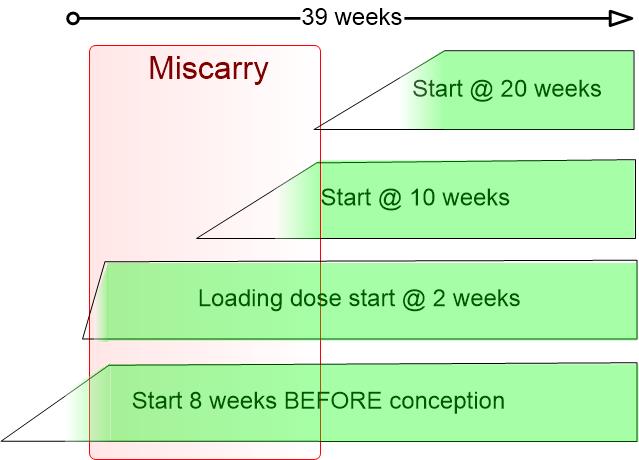Conception within 6 months 3X more likely if high vitamin D
Pre-conception 25-hydroxyvitamin D (25(OH)D) and fecundability.
Hum Reprod. 2019 Oct 28. pii: dez170. doi: 10.1093/humrep/dez170.
 ---
1. See also VitaminDWiki
* Assisted Reproduction – 5 studies concluded vitamin D repletion helps – Review March 2015
* Pregnancy success increased 30 percent if sunny (or vitamin D) one month earlier – June 2015
* Preconception vitamin D is great - every extra 10 ng associated with 10 percent more likely to have live birth – Aug 2018
* Women with more than minimum vitamin D were 3.4 X more likely to achieve pregnancy and 1.6 X more likely to have live births – June 2017 - A very similar conclusion to the study on this page
If they had considered good male vitamin D levels there would have been about double the benefits
* Male fertility 4 X higher if high Vitamin D – Nov 2015
Also: High vitamin D ==> fewer complications, healthier infant and then child
1. Healthy pregnancies need lots of vitamin D has the following summary
{include}
1. Ensure a healthy pregnancy and baby - take Vitamin D before conception has the following
---
1. See also VitaminDWiki
* Assisted Reproduction – 5 studies concluded vitamin D repletion helps – Review March 2015
* Pregnancy success increased 30 percent if sunny (or vitamin D) one month earlier – June 2015
* Preconception vitamin D is great - every extra 10 ng associated with 10 percent more likely to have live birth – Aug 2018
* Women with more than minimum vitamin D were 3.4 X more likely to achieve pregnancy and 1.6 X more likely to have live births – June 2017 - A very similar conclusion to the study on this page
If they had considered good male vitamin D levels there would have been about double the benefits
* Male fertility 4 X higher if high Vitamin D – Nov 2015
Also: High vitamin D ==> fewer complications, healthier infant and then child
1. Healthy pregnancies need lots of vitamin D has the following summary
{include}
1. Ensure a healthy pregnancy and baby - take Vitamin D before conception has the following
 ---
1. Fertility and Sperm category contains the following
{include}
---
1. Fertility and Sperm category contains the following
{include}
Jukic AMZ1,2, Baird DD2, Weinberg CR3, Wilcox AJ2, McConnaughey DR4, Steiner AZ5.
1 Department of Chronic Disease Epidemiology, Yale School of Public Health, One Church St, 6th floor, New Haven, CT 06510, USA.
2 Epidemiology Branch, National Institute of Environmental Health Sciences, PO Box 12233, Research Triangle Park, NC 27709, USA.
3 Biostatistics and Computational Biology Branch, National Institute of Environmental Health Sciences, PO Box 12233, Research Triangle Park, NC 27709, USA.
4 Westat, Durham, NC 27709, USA.
5 Duke University Hospital, 5704 Fayetteville Road, Durham, NC 27713, USA.
STUDY QUESTION:
Is pre-conception 25(OH)D associated with the per cycle probability of conception, i.e fecundability, in a prospective cohort study?
SUMMARY ANSWER:
There are suggestive associations of high 25(OH)D (at least 50 ng/ml) with increased fecundability and low 25(OH)D (<20 ng/ml) with reduced fecundability, but the estimates were imprecise.
WHAT IS KNOWN ALREADY:
Vitamin D has been associated with reproductive function and fertility in animal studies, but few human studies exist.
STUDY DESIGN, SIZE, DURATION:
This community-based prospective cohort study included 522 women attempting to become pregnant between 2010 and 2016. The women completed online daily and monthly diaries until a positive home pregnancy test was observed or 12 months had elapsed.
PARTICIPANTS/MATERIALS, SETTING, METHODS:
The study included women from central North Carolina who were aged 30-44 with no history of infertility, with no more than 3 months of attempt time at recruitment. Women recorded vaginal bleeding so that the ongoing number of attempt cycles could be counted and used to quantify a woman's pregnancy attempt time. Blood collected at the study entry was analysed for 25(OH)D using liquid chromatography tandem mass spectrometry. Associations with fecundability were estimated with a log-binomial discrete time-to-event model.
MAIN RESULTS AND THE ROLE OF CHANCE:
Among 522 women, 257 conceived during the study. The mean age was 33 years and the mean 25(OH)D was 36 ng/ml. There was an estimated 10% higher fecundability with each 10 ng/ml increase in 25(OH)D (fecundability ratio (FR) 1.10, 95% CI: 0.96, 1.25).
The suggestive dose-response association with the continuous measure of 25(OH)D was driven by women in the lowest and the highest categories of 25(OH)D. Compared to women with 25(OH)D of 30-40 ng/ml, women below 20 ng/ml had an estimated 45% reduction in fecundability (FR (CI): 0.55 (0.23, 1.32)), and women with at least 50 ng/ml had an estimated 35% increase in fecundability (FR (CI): 1.35 (0.95, 1.91)).
Across these three categories (25(OH)D of <20 ng/ml, 30-40 ng/ml and > 50 ng/ml), the probability of taking longer than 6 months to conceive was, respectively, 51% (17%, 74%), 28% (17%, 39%) and 15% (10%, 37%).
LIMITATIONS, REASONS FOR CAUTION:
While the distribution of 25(OH)D was wide, the number of observed cycles with high 25(OH)D (N = 107) or low 25(OH)D (N = 56) was small.
WIDER IMPLICATIONS OF THE FINDINGS:
Our findings are consistent with prior reports of reduced fertility in women with 25(OH)D concentrations below the clinically defined deficiency level (20 ng/ml). Further studies are needed to evaluate the possible reproductive benefits of considerably higher 25(OH)D concentration (>50 ng/ml).
